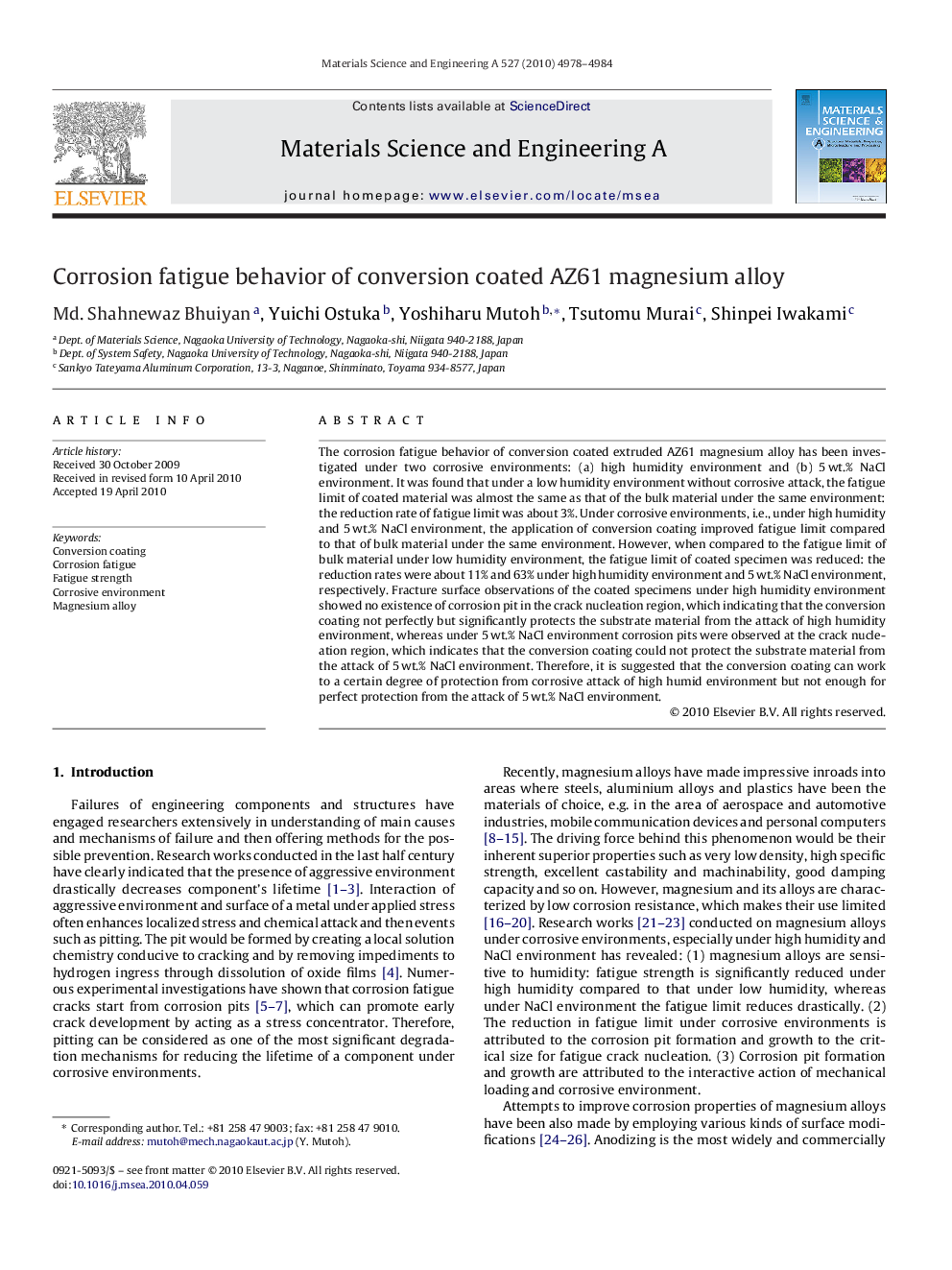| Article ID | Journal | Published Year | Pages | File Type |
|---|---|---|---|---|
| 1579094 | Materials Science and Engineering: A | 2010 | 7 Pages |
Abstract
The corrosion fatigue behavior of conversion coated extruded AZ61 magnesium alloy has been investigated under two corrosive environments: (a) high humidity environment and (b) 5Â wt.% NaCl environment. It was found that under a low humidity environment without corrosive attack, the fatigue limit of coated material was almost the same as that of the bulk material under the same environment: the reduction rate of fatigue limit was about 3%. Under corrosive environments, i.e., under high humidity and 5Â wt.% NaCl environment, the application of conversion coating improved fatigue limit compared to that of bulk material under the same environment. However, when compared to the fatigue limit of bulk material under low humidity environment, the fatigue limit of coated specimen was reduced: the reduction rates were about 11% and 63% under high humidity environment and 5Â wt.% NaCl environment, respectively. Fracture surface observations of the coated specimens under high humidity environment showed no existence of corrosion pit in the crack nucleation region, which indicating that the conversion coating not perfectly but significantly protects the substrate material from the attack of high humidity environment, whereas under 5Â wt.% NaCl environment corrosion pits were observed at the crack nucleation region, which indicates that the conversion coating could not protect the substrate material from the attack of 5Â wt.% NaCl environment. Therefore, it is suggested that the conversion coating can work to a certain degree of protection from corrosive attack of high humid environment but not enough for perfect protection from the attack of 5Â wt.% NaCl environment.
Related Topics
Physical Sciences and Engineering
Materials Science
Materials Science (General)
Authors
Md. Shahnewaz Bhuiyan, Yuichi Ostuka, Yoshiharu Mutoh, Tsutomu Murai, Shinpei Iwakami,
